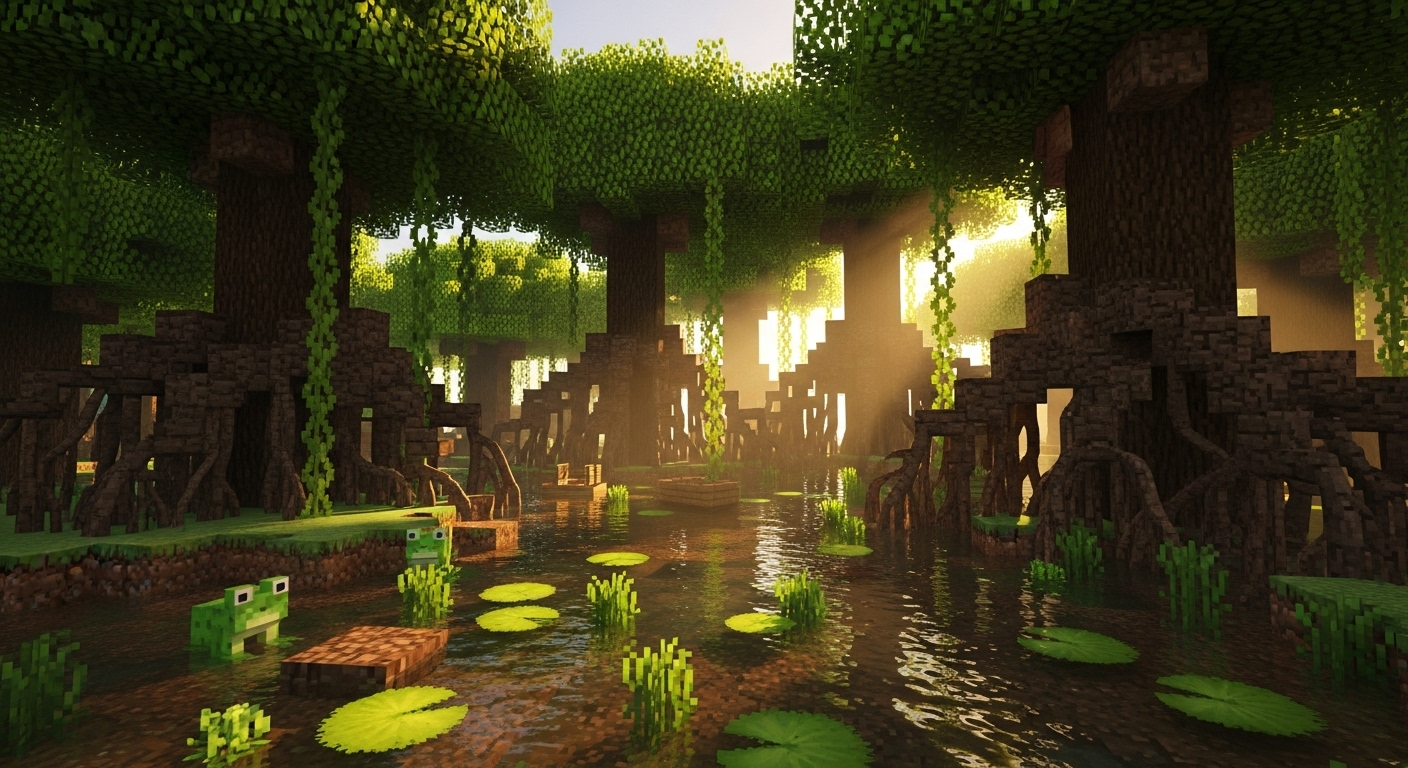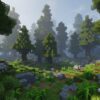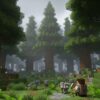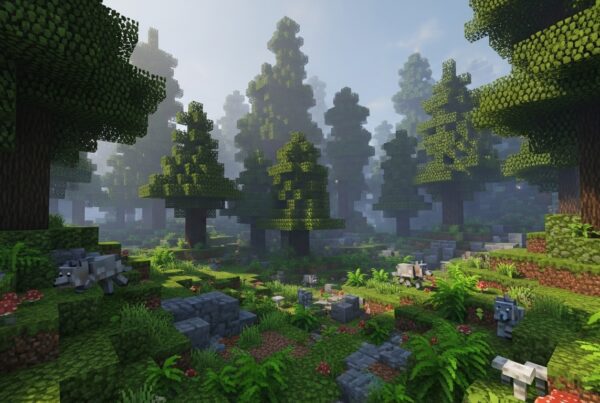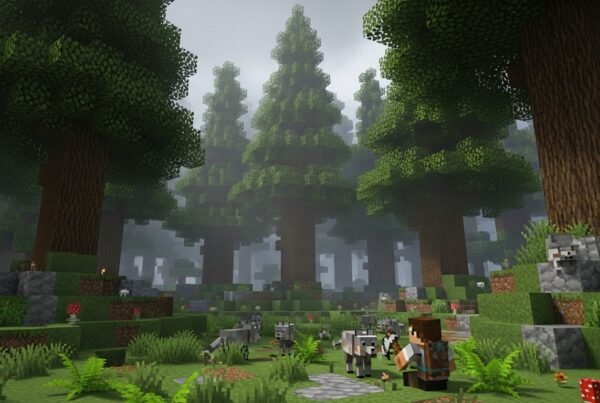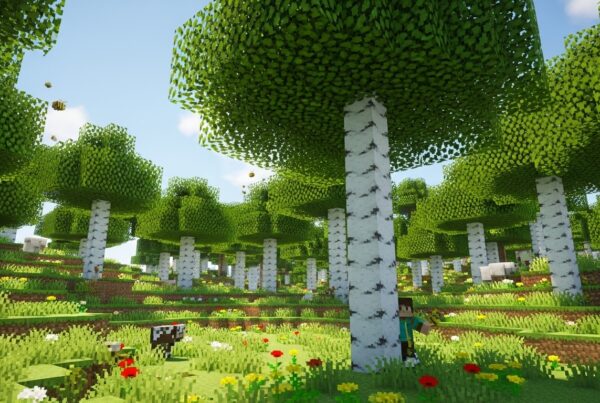The Mangrove Swamp is one of the newest and most distinctive biomes in Minecraft, introduced in The Wild Update (Java Edition 1.19 / Bedrock 1.19.0). Known for its thick Mangrove Trees, muddy terrain, and the introduction of frogs and tadpoles, this biome brings a rich, vibrant ecosystem to the game’s wetlands.
Whether you’re here to collect Mangrove Wood, craft Mud Bricks, or explore its unique wildlife, this guide will help you make the most of the Mangrove Swamp biome.
Overview
| Feature | Description |
|---|---|
| Biome ID | minecraft:mangrove_swamp |
| Introduced In | 1.19 (The Wild Update) |
| Temperature | Warm / Humid |
| Precipitation | Frequent rain |
| Elevation | Sea level (Y=62) |
| Climate Category | Lush / Wetlands |
| Common Neighboring Biomes | Jungle, Desert, or Regular Swamp |
How to Find a Mangrove Swamp
Mangrove Swamps usually generate in low-lying, humid regions near warm biomes like Jungles and Deserts. They often border oceans, rivers, or other wetlands.
Ways to locate this biome:
- Use the command: /locate biome minecraft:mangrove_swamp
- Look for dark green water, tall mangrove trees, and muddy ground
- Explore warm coordinates near sea level and tropical regions
Example Seeds:
| Platform | Seed | Spawn Description |
|---|---|---|
| Java | 584663505155266133 | Large Mangrove Swamp near spawn |
| Bedrock | -1547993536 | Spawn beside swamp and ocean |
| Java | 3546842701776989958 | Massive Mangrove forest with Ruined Portal nearby |
Terrain and Environment
The Mangrove Swamp is a biome dominated by mud, shallow water, and dense mangrove roots, making it both beautiful and challenging to explore.
Mud Blocks
- Naturally found across the biome.
- Created manually by using a Water Bottle on Dirt.
- Can be crafted into Packed Mud, and then into Mud Bricks.
- Unique mechanic: placing Mud above Pointed Dripstone with a Dripstone block below will slowly turn the Mud into Clay — a renewable clay source.
Mangrove Roots and Waterlogged Terrain
- Mangrove roots extend through the water, creating a maze-like structure.
- Waterlogging can make navigation difficult—boats are the best way to travel.
- Muddy Mangrove Roots blend aesthetic design and resource value for building.
Atmosphere
- Dense tree coverage results in low light levels, ideal for hostile mob spawns at night.
- Frequent rain and heavy foliage give it a jungle-like humidity.
Flora: Mangrove Trees and Propagules
Mangrove Trees
- Grow from Mangrove Propagules instead of saplings.
- Feature above-ground roots and produce Mangrove Wood.
- Mangrove wood items include:
- Mangrove Planks
- Mangrove Doors
- Mangrove Signs
- Mangrove Boats
- Bee Nests can occasionally generate on mangrove trees.
Mangrove Propagules
- Grow directly from Mangrove Leaves.
- Can be planted on mud, dirt, or underwater blocks.
- Function as saplings—bone meal accelerates growth.
Other Vegetation
- Lilypads, Vines, Seagrass, and Tall Grass generate throughout.
- Rare flowers and mushrooms appear on solid ground patches.
Mobs in the Mangrove Swamp
Passive Mobs
- Frogs – Found naturally in this biome.
- Eat small Slimes and Magma Cubes.
- Produce Froglight blocks in three colors: Pearlescent, Verdant, and Ochre.
- Color depends on where tadpoles mature (warm, temperate, or cold biome).
- Tadpoles – Spawn in water; grow into frogs after a few minutes or with bucket transport.
- Bees – Often spawn near bee nests on Mangrove Trees.
- Glow Squids and Tropical Fish – Appear in deeper swamp water.
Hostile Mobs
- Slimes – Spawn at night or in slime chunks.
- Witches – Rarely spawn near Witch Huts.
- Zombies, Skeletons, and Spiders – Common at night in shaded areas.
Structures and Points of Interest
- Witch Huts – Can generate rarely; may contain a Witch and Black Cat.
- Ruined Portals – Occasionally found half-submerged among roots.
- Bee Nests – Naturally spawn in Mangrove Trees.
- Villages, Temples, and Mineshafts – Do not generate in this biome.
Resources and Loot
The Mangrove Swamp offers valuable materials for both builders and survival players.
| Resource | Source | Use |
|---|---|---|
| Mangrove Wood | Trees | Building, tools, boats |
| Mud | Natural / Dirt + Water | Base material for bricks |
| Packed Mud | Mud + Wheat | Crafting Mud Bricks |
| Mud Bricks | Crafted | Building blocks |
| Muddy Roots | Ground blocks | Decoration |
| Froglight | Frogs + Magma Cubes | Lighting |
| Clay | Mud + Dripstone setup | Renewable clay source |
Survival and Exploration Tips
Exploration
- Use boats for travel—walking is slow due to mud and water.
- Equip Depth Strider or Frost Walker enchantments.
- Keep torches handy—dense roots create dark areas for mob spawns.
Building
- Construct stilted bases using Mangrove Logs or Mud Bricks.
- Combine Mangrove Wood and Mud Bricks for an earthy aesthetic.
- Use Lanterns and Froglights to brighten shaded bases.
Resource Management
- Farm mud using the dripstone technique for renewable clay.
- Breed frogs for Froglight farming.
- Combine with nearby Jungle biomes for bamboo and ocelot access.
Comparison: Mangrove Swamp vs Regular Swamp
| Feature | Mangrove Swamp | Regular Swamp |
|---|---|---|
| Tree Type | Mangrove Trees | Oak Trees with Vines |
| Ground Blocks | Mud, Mangrove Roots | Grass, Water, Dirt |
| Mobs | Frogs, Tadpoles, Slimes | Slimes, Witches |
| Structures | Witch Huts (rare), Ruined Portals | Witch Huts (common) |
| Wood Type | Mangrove | Oak |
| Water Color | Dark green | Murky blue |
Building Inspiration
The Mangrove Swamp offers one of the best biomes for eco-themed or rustic builds.
Ideas for builders:
- Build boardwalk villages above water using Mangrove Logs and Rope Bridges.
- Use Mud Bricks for ancient or weathered structures.
- Add lanterns, Froglights, and hanging vines for atmosphere.
- Combine nearby Jungle resources (bamboo, vines) for organic aesthetics.
Fun Facts and Trivia
- Frogs are the first Minecraft mob to produce light-emitting blocks.
- Mangrove Wood was the first new overworld wood type since the Nether Update.
- The biome is inspired by real-world mangrove ecosystems, highlighting coastal conservation.
Frequently Asked Questions
Q: Can Mangrove Trees grow outside the Mangrove Swamp biome?
A: Yes. Plant Mangrove Propagules in mud or dirt blocks in any biome with sufficient light and space.
Q: Do villages spawn in the Mangrove Swamp biome?
A: No, villages cannot generate here.
Q: Are Frogs exclusive to the Mangrove Swamp?
A: Frogs spawn naturally in Mangrove and Regular Swamps, but tadpoles can be transported anywhere.
Q: Can mud be used as farmland?
A: No. Mud cannot be tilled for crops, but it’s excellent for crafting and building.
Conclusion
The Mangrove Swamp biome brings lush, muddy beauty and ecological depth to Minecraft. Its combination of unique wood, renewable mud mechanics, and new mobs makes it one of the most rewarding places to explore. Whether you’re gathering materials, building a stilted village, or hunting Froglights, the Mangrove Swamp is a perfect mix of challenge and creativity.
